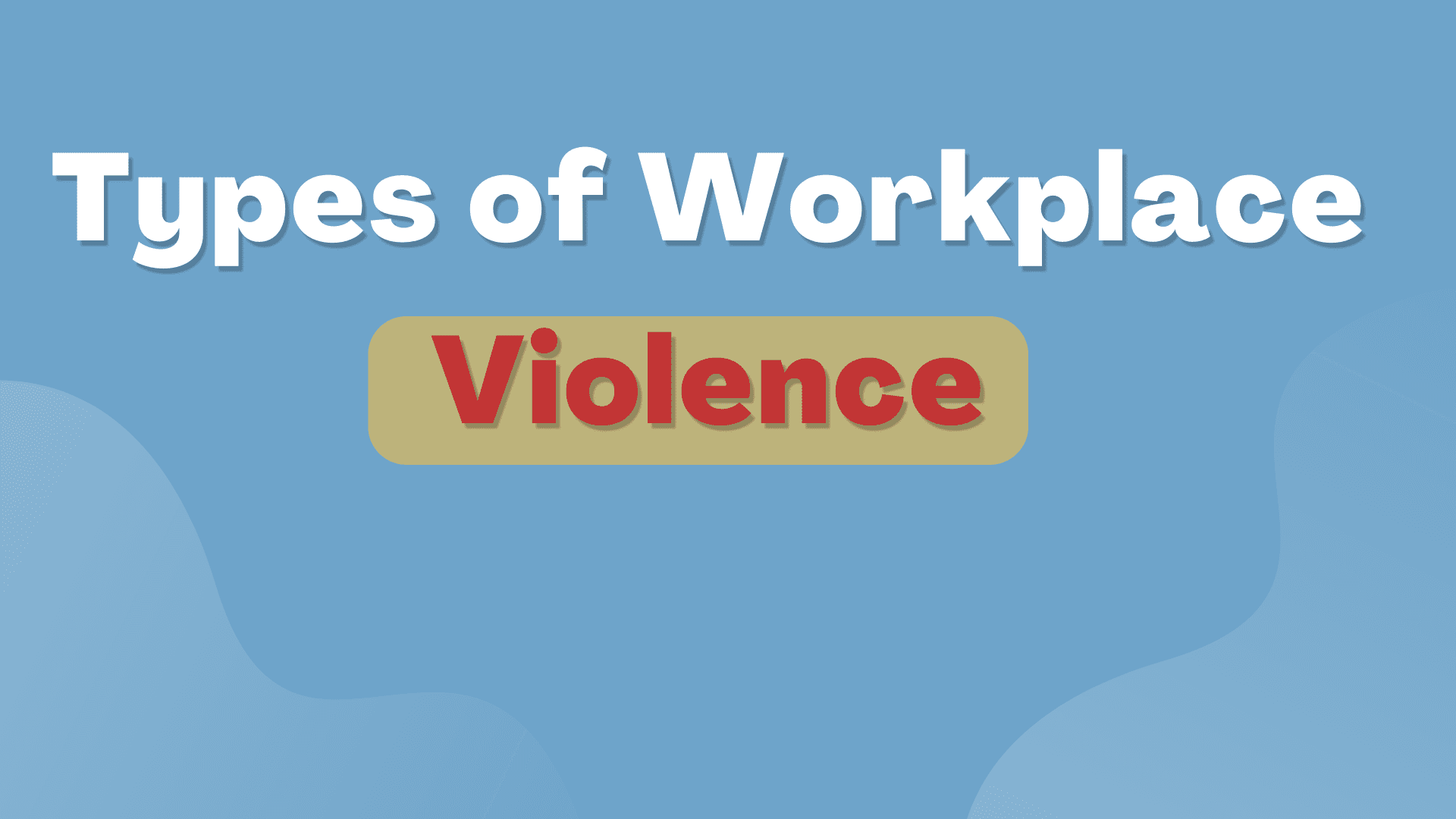As per OSHA, “Workplace violence is any act or threat of physical violence, harassment, intimidation, or other threatening behavior at work. It ranges from threats and verbal abuse to physical assaults—and even homicide.”
Workplace violence can involve employees, customers, or visitors.
To reduce violence and its impact, it is necessary to understand the violence type so businesses can take necessary safety and security measures.
For the smooth functioning of the workplace, it is necessary to understand the types of workplace violence and how to mitigate them to ensure a safe and healthy work environment.
Four Types of Workplace Violence
According to the National Institute of Occupational Safety and Health (NIOSH), workplace violence can be of four types:
- Criminal Intent
- Customer/Client
- Worker-on-Worker
- Personal Relationship
Type I: Criminal Intent
During instances of criminal intent, the offender has no relation with the business or staff. They commit the crime with violence. This violence is incidental to another crime, such as shoplifting, trespassing, or robbery. Here, the offender aims to steal or rob, and during the act, violence occurs.
For example, while shoplifting, violence with a shopkeeper or after stealing and running, and violence with security personnel.
According to the National Crime Victimization Survey (NCVS), robbery is the most common reason for work-related homicide. This covers around 85 percent of deaths due to workplace violence.
Act of terrorism falls under this category.
Type II: Customer/Client
During instances of customer/client violence, a customer or client may have a disagreement with an employee that can turn into an argument and result in violence. Here, the perpetrator has a legitimate relationship with the businesses (e.g., a client, customer, user, student, patient, etc.).
The offender commits acts of violence when served by the victim (e.g., a teacher, doctor, server, nurse, etc.).
For example, a patient can attack a doctor or nurse while being treated, or a customer can yell at a server for a delay in the service.
This type of violence is most common in the healthcare and hospitality industry and with social service workers.
Type III: Worker-on-Worker
During instances of worker-on-worker violence, workers or team members can commit verbal or physical violence against each other. The cause of violence may be due to unclear roles and responsibilities or unclear priorities in the work schedule.
For example, an employee can think another employee is interfering with his work or the other employee is not allowing him to work smoothly. Sometimes, they may feel the other employee is taking credit for their work. Sometimes, an employee can attack the boss for denying the leave.
Here, the culprit can be an employee or past employee of the business who attacks, abuses or threatens other employees or past employees in the workplace.
Bullying falls into this category. Violence often occurs when an employee gets revenge for being treated unfairly by the manager, supervisor, or coworkers.
Type IV: Personal Relationship
During this type of workplace violence, the offender has no relationship with the business but a personal relationship with the employee. The offender approaches the workplace of the employee and shows violent behavior.
For example, an employee’s spouse may enter the office and fight with the employee for personal reasons.
This violence category includes domestic workers who suffer abuse or domestic violence at the offender’s home while working.
Ideological Violence
Another type of violence is directed toward a particular group based on religion, caste, thinking, ideology, political opinion, skin color, etc. Many extremists support this kind of violence to prove their points with violence.
Some examples of this kind of violence are attacks on religious places of worship, schools, etc.
Factors Affecting the Risks of Workplace Violence
The following factors can increase the risks of workplace violence:
- Working in a politically unstable area
- Working in a remote area
- Working alone or in an isolated area
- Dealing with patients in a care setting
- Working at a reception desk
- Working at a customer service station
- Working with mentally ill people
- Working with local law enforcement agencies
How to Control Workplace Violence
Violence is rising in the workplace, and according to one survey, one out of seven Americans feel unsafe at work. However, not all violence can be prevented, and it can be reduced to a great extent.
Businesses can follow these guidelines to reduce workplace violence:
- Develop a zero-tolerance policy for workplace violence and implement workplace violence prevention programs
- Provide staff training on how to manage violence once it occurs
- Encourage staff to report violence and make sure that the reporting process is safe and confidential
- Upgrade your physical security
- Conduct third-party audits for a safe and secure environment
- Reduce your monetary assets on hand
- Conduct background checks on all employees
- Monitor your workplace with CCTV cameras
- Use alarm systems or panic buttons if dealing with cash or jewelry
Summary
Workplace violence is a common phenomenon in which an offender displays threatening and/or disruptive behavior at a work site. However, when businesses properly monitor this behavior and put workplace-violence prevention plans into place, they can reduce workplace violence, increase employee morale, and improve work efficiency.
